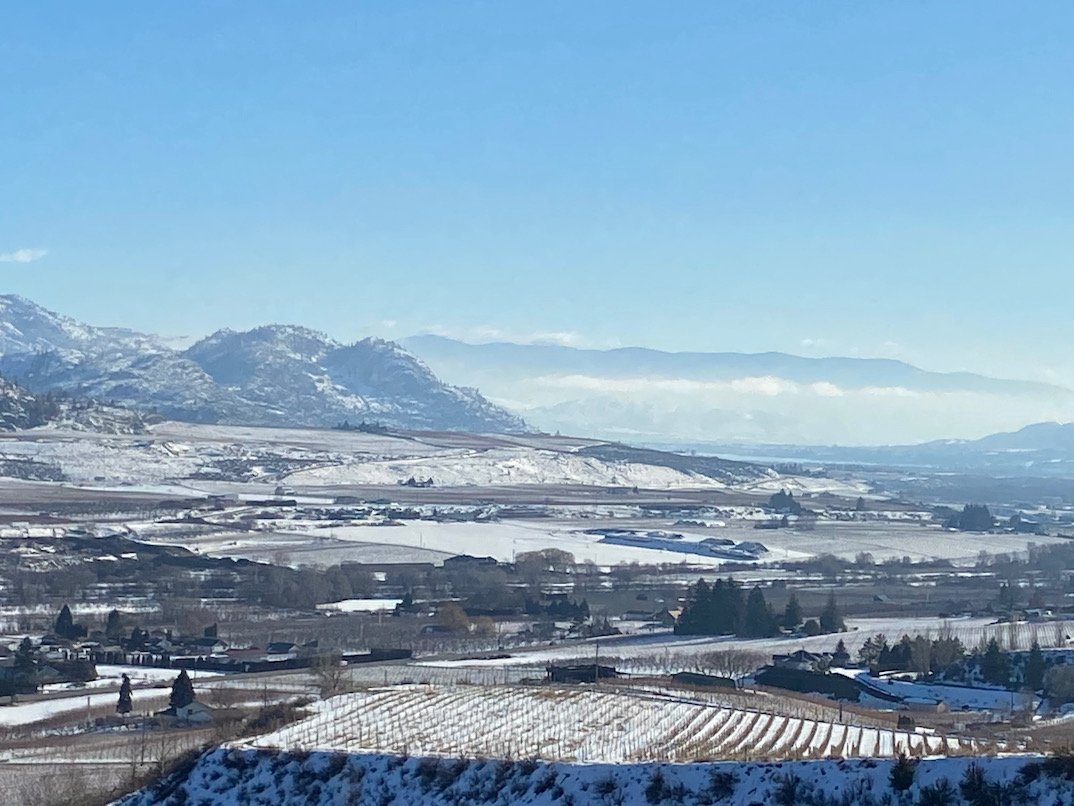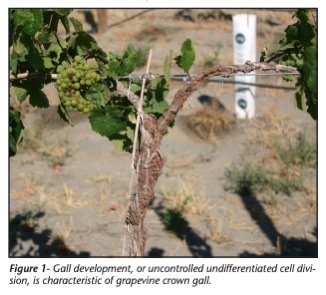How Cold is Too Cold?

Winter swept in to the Okanagan Valley (and most of BC’s wine regions) with a vengeance in late December 2021. After several days of bone-chilling temperatures (base temps of -15C to around -25C, with wind chills down to about -30C, depending on location), grape growers and wine makers had reason to worry about damage in their vineyards.
The answer (“How cold is too cold?”), according to several growers and academic experts*, is that for vitis vinifera (now the vast majority of plantings in British Columbia vineyards), temperatures between about -20 and -24, especially if in a “long and low” weather pattern, can be lethal to next year’s crop. New buds (primary, secondary and tertiary) have already formed in the grapevine, as they develop on a two-year cycle (see Figure below). At the temperatures the Okanagan Valley experienced in late December 2021, grape growers could suffer a 50% or higher loss in their vineyards.
How does this happen?
As can be guessed, it is the water in the vine that freezes, either between cells or within cells. The former doesn’t usually kill the vine itself, but the latter can. An early winter deep freeze is particularly damaging if vines haven’t completed their annual transition into dormancy for the winter. An early spring thaw-then-freeze cycle can also cause bud damage that imperils the formation of grape clusters. Both scenarios are annual risk factors for non-coastal BC vineyards.
The extent of winter damage on the new buds – and on the vines themselves - depends on a number of factors, two of which seem to be the most significant: age of the vine, and the grape varietal. Unfortunately, anyone with newly planted vineyards should anticipate harm to their new vines. And growers of certain varietals have a higher chance of serious bud damage than others. Based on cold hardiness data presented for the sub regions of the Okanagan Valley for early January, Gewurztraminer, Riesling, Pinot Noir, Chardonnay and Sauvignon Blanc were at higher risk than other varietals.
Where has it happened?
In terms of geographic dispersion of winter damage in the Okanagan Valley, the vineyards around Kelowna and north (including West Kelowna, Lakeshore and Lake Country) were exposed to base temperatures below -20C for a week or more. The arctic air flowed south down the Valley for several days, and growers in the south also feared bud damage of 50-80%. While some growers in the south Okanagan (Black Sage, Golden Mile, Oliver and Okanagan Falls) have reported damage, it appears to be less severe. Anecdotally, growers observed that vineyards from the Naramata Bench north have some problems, while those south of Okanagan Falls appear to be in better shape.
Unfortunately, the harm caused by the late December 2021 cold snap doesn’t just manifest in the loss of buds/flowers/fruit in the coming growing season. As Michelle Moyer (Assistant Professor and Viticulture Extension Specialist at Washington State University’s Wine Science Centre) explained in a January webinar (cited at bottom), winter damage increases the likelihood of crown gall disease (a systemic bacteriological infection of the vine) appearing in July or August of the subsequent growing season. It can be managed but not easily eradicated once established in a vineyard. Crown gall affects water movement and hence growth of the vine. This can have multiple year implications for the growth and health of the affected vines.
Source: Washington State University, Grape vine crown gall white paper, 2013.
There’s no sugar coating it: the news is grim. As has been reported elsewhere, 2021 was the latest in a series of smaller than usual harvests. Wineries around the province who didn’t control their grape source (i.e. own their vineyards or have established grower contracts) had great difficulty or great expense (or both!) to secure certain varietals. For consumers, this obviously means less availability – or a shorter time period after release to find your favourite bottles – and probably higher prices. The 2021 winter freeze all but guarantees the 2022 harvest will again be small, with the same impacts for consumers.
What is to be done?
Wineries will need to have strategies in place, and for some, these will be survival strategies: be nimble in securing grapes (an open chequebook may be helpful), be rigorous in allocating wines to most valued trade channels (no easy feat when the on- and off-premise markets have been turned upside down by the pandemic), and feathering supply to connect one short vintage to the next to maintain the customer base, or simply selling out, also a valid strategy .
These are not easy times for Okanagan wineries or growers, but in my discussions up and down the Valley, I’ve been consistently impressed by the spirit of quiet determination and resilience on display. As British Columbia eases into a more open and “normal” spring and summer (fingers crossed), wineries are keeping their fingers crossed for a good visitor season. The best way we can all support our favourite producers (whether Okanagan, Similkameen, Shuswap, Kootenays, Thompson Valley, Fraser Valley, Gulf Islands or Vancouver Island) is to pay them a visit (appointments often requested), learn their stories, purchase their wine, and marvel at the persistence it takes to do what they do, year in and year out.
If you wish to receive all WineDrops posts, please join the mailing list here: https://winedrops.ca/contact.
*In addition to sources hyperlinked in text, resources consulted for this post include:
Michelle Moyer, Washington State University Wine Science Center Associate Professor and Viticulture Extension Specialist (access webinar Winter Damage Workshop of January 13, 2022 presented by the BC Grape Growers Association and the BC Wine Grape Council)
Dr. Carl Bogdanoff of Summerland Research & Development Centre, data on grapevine cold hardiness, accessed via the Canadian Grapevine Certification Network, posted January 10, 2022
Tim Martinson, “Grapes 101: How Grapevine Flowers Form” Cornell University, Viticulture & Enology Department, Nov 2018, a short overview of the grape vine growth cycle
Various winery owners and grape growers in the Okanagan Valley


